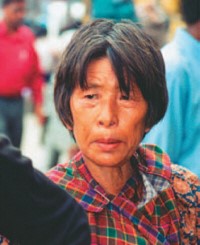Matpa in Bhutan

Photo Source:
Copyrighted © 2025
Peoples of the Buddhist World, Asia Harvest All rights reserved. Used with permission |

Map Source:
People Group data: Omid. Map geography: UNESCO / GMI. Map Design: Joshua Project
|
| People Name: | Matpa |
| Country: | Bhutan |
| 10/40 Window: | Yes |
| Population: | 21,000 |
| World Population: | 21,000 |
| Primary Language: | Chocangacakha |
| Primary Religion: | Buddhism |
| Christian Adherents: | 0.00 % |
| Evangelicals: | 0.00 % |
| Scripture: | Portions |
| Ministry Resources: | No |
| Jesus Film: | No |
| Audio Recordings: | Yes |
| People Cluster: | South Asia Buddhist |
| Affinity Bloc: | South Asian Peoples |
| Progress Level: |
|
Introduction / History
The Matpa people are concentrated in the lower areas of Mongar District in eastern Bhutan. Their two largest villages are Tsamang and Tsakaling. Several Matpa villages are also located within the Lhuntse District further to the north, especially in and around the village of Kurmet. They have also been listed by their language name, Chocangacakha, which is closely related to Dzongkha, Bhutan's national language spoken by the Drukpa people.
What Are Their Lives Like?
The importance of Tibetan Buddhism and the unity that it fosters are best seen among the Matpa people during festivals and ceremonies. The whole community attends, dressed in their festive best. Participants wear gruesome masks depicting powerful demons, and stories are told of how the Buddhist sage Padmasambhava defeated demonic forces with the truth of Buddhism.
What Are Their Beliefs?
All Matpa people are followers of Tibetan Buddhism.
What Are Their Needs?
Being an official Buddhist kingdom, Bhutan has been largely locked away from the influence of the gospel for centuries until recent decades, when migrants from Nepal and India have brought Christianity into the country for the first time on any significant scale. The Buddhist groups, however, have remained largely untouched by the gospel. They see Christianity as a foreign religion with little relevance to their lives. Others see Christianity as a threat to traditional Bhutanese values and culture.
Prayer Points
Pray for the Lord to pave the way for gospel outreach among the Matpa people.
Pray for long term workers who will produce gospel materials in their language.
Pray for many to be drawn to the King of kings.